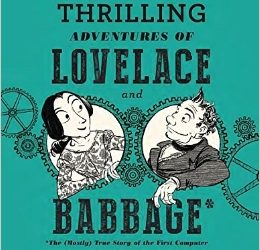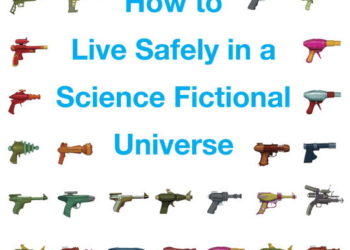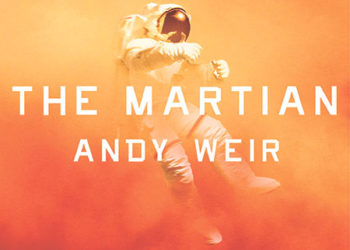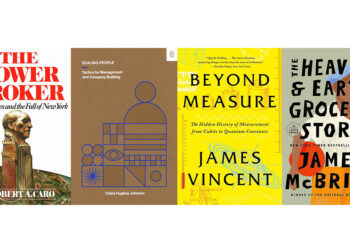Editor’s Note: Every year as we enter the holiday season, we take a moment to pause and look back on the best books we encountered (not a “best books of 2023″ list, but a list of the best books the Chefs read during 2022 — the books might be classics, a few years old, or brand new). In recent years we expanded our list to include any sort of cultural creation or experience our Chefs wanted to share.
Part 1 and Part 2 ran earlier this week.
Karin Wulf
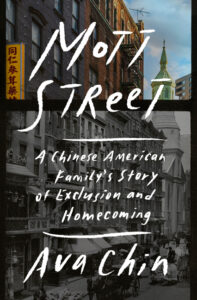 Ava Chin’s Mott Street: A Chinese American Family’s History of Exclusion and Homecoming and Matthew Gutterl’s Skinfolk: A Memoir. With a nod to Abraham Verghese’s The Covenant of Water.
Ava Chin’s Mott Street: A Chinese American Family’s History of Exclusion and Homecoming and Matthew Gutterl’s Skinfolk: A Memoir. With a nod to Abraham Verghese’s The Covenant of Water.
I’ve always kept close reading notes for non-fiction, but this year I kept closer track of all the fiction and non-fiction I read than in some previous years. I’m especially glad I did as my research interests and pleasure reading have converged in rewarding ways. I read both Ava Chin’s Mott Street and Matthew Guterl’s Skinfolk for work; as a historian of gender and family I have researched, taught, and written about the complexities of family, especially in my own field of eighteenth-century British America but also across other fields.
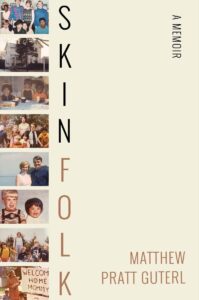 These two histories are part of a developing literature of scholars exploring their own family histories and contextualizing them in terms of both broader trends and very local dynamics. Each is fantastically readable – I read each in happy gulps – as well as deeply insightful and moving. Chin writes about working through the long history of her family in New York and the entwined histories of immigration and racism including its bureaucratic expression in immigration law. Gutterl writes about his white parents’ decision to adopt two Black and two Asian children in addition to their biological two, and the complex, fraught, and tender dynamics of their family relationships. The realities of racism in America and the different ways it has operated, bluntly and subtly, are a key theme of both books – as are the profound and sometimes unexpected connections of family. Because they are scholars, and because I am a scholar interested in how people write about family, the ways that Chin and Gutterl deploy their research skills and share their findings was especially interesting. I was also, in both cases, in tears by the end.
These two histories are part of a developing literature of scholars exploring their own family histories and contextualizing them in terms of both broader trends and very local dynamics. Each is fantastically readable – I read each in happy gulps – as well as deeply insightful and moving. Chin writes about working through the long history of her family in New York and the entwined histories of immigration and racism including its bureaucratic expression in immigration law. Gutterl writes about his white parents’ decision to adopt two Black and two Asian children in addition to their biological two, and the complex, fraught, and tender dynamics of their family relationships. The realities of racism in America and the different ways it has operated, bluntly and subtly, are a key theme of both books – as are the profound and sometimes unexpected connections of family. Because they are scholars, and because I am a scholar interested in how people write about family, the ways that Chin and Gutterl deploy their research skills and share their findings was especially interesting. I was also, in both cases, in tears by the end.
The same was true of one of the year’s big novels, Verghese’s novel about multiple generations in southwest India (Kerala) The Covenant of Water. Also about family, also about complex and subtle racism, also about how many different ways people find to connect across and despite family, it’s compelling and lively. And long. There is so much to say about why I read it at a leisurely pace, but returning to re-read dialogue (and especially interior monologues) was one. Like Chin’s and Gutterl’s books, I was captivated by the family archive lurking at the story’s foundation.
David Crotty
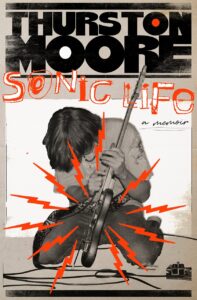 2023 was a strange reading year for me. I usually read a heavy diet of science fiction, but whether a shift in brain chemistry or a lack of running into any new books that hooked me, I ended up spending most of the year reading non-fiction, largely biographies, autobiographies, or histories of the musicians and music I grew up with and/or continue to discover and enjoy. Standouts included Marianne Faithful’s at times harrowing Faithful: An Autobiography, Kathy Valentine’s entertaining All I Ever Wanted (enjoyable but she joined the band at the point where the Go-Go’s began to get famous, so it missed out on the parts of their early history I was more interested in), and Richard Thompson’s Beeswing, which is as charming as pretty much everything he does.
2023 was a strange reading year for me. I usually read a heavy diet of science fiction, but whether a shift in brain chemistry or a lack of running into any new books that hooked me, I ended up spending most of the year reading non-fiction, largely biographies, autobiographies, or histories of the musicians and music I grew up with and/or continue to discover and enjoy. Standouts included Marianne Faithful’s at times harrowing Faithful: An Autobiography, Kathy Valentine’s entertaining All I Ever Wanted (enjoyable but she joined the band at the point where the Go-Go’s began to get famous, so it missed out on the parts of their early history I was more interested in), and Richard Thompson’s Beeswing, which is as charming as pretty much everything he does.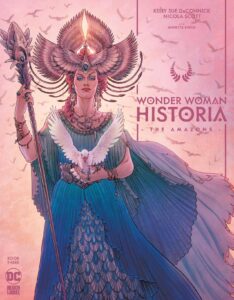 And as we’ve now expanded our recommendations beyond prose books, I’ll note that my favorite comic of the year was Kelly Sue DeConnick’s Wonder Woman Historia: The Amazons, which does not feature the title character but rather creates a new origin myth for the Amazons amidst the machinations of the Greek gods, each volume illustrated by different but equally striking artists. Highly recommended for fans of the burgeoning genre of modern retellings of classic mythology. While the album I listed to the most this year was probably The Feelies Some Kinda Love, a glorious collection of performances of Velvet Underground songs, I’m still a bit in awe of the Mexico City band Descartes A Kant and their science fiction concept album After Destruction, which, with touches of Devo, Bowie, and Star Trek, pushes all my buttons. Judge for yourself below.
And as we’ve now expanded our recommendations beyond prose books, I’ll note that my favorite comic of the year was Kelly Sue DeConnick’s Wonder Woman Historia: The Amazons, which does not feature the title character but rather creates a new origin myth for the Amazons amidst the machinations of the Greek gods, each volume illustrated by different but equally striking artists. Highly recommended for fans of the burgeoning genre of modern retellings of classic mythology. While the album I listed to the most this year was probably The Feelies Some Kinda Love, a glorious collection of performances of Velvet Underground songs, I’m still a bit in awe of the Mexico City band Descartes A Kant and their science fiction concept album After Destruction, which, with touches of Devo, Bowie, and Star Trek, pushes all my buttons. Judge for yourself below.
Angela Cochran
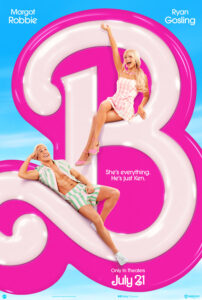 I read a number of books this year that I quite enjoyed but the cultural work I keep going back to over and over in my mind is The Barbie Movie.
I read a number of books this year that I quite enjoyed but the cultural work I keep going back to over and over in my mind is The Barbie Movie.
I still can’t wrap my head around how this movie so poignantly describes what almost every woman has felt at some point in her life through the lens of a beloved doll that came to be known as the quintessential stereotype. In fact, Margot Robbie’s Barbie is “stereotypical Barbie,” a point of pride that starts to fade when she realizes that other Barbies (President Barbie, Doctor Barbie, Pulitzer Prize Winning Barbie, etc.) have so much more to offer.
All the Barbies in Barbie Land believe that they can do anything, because Barbie dolls have been everything! And they believe that they inspire young girls to grow up to be fierce woman. The Barbie Movie is nostalgic for anyone that loved the toy. Ken, all the Kens, also live in Barbie Land, and they are not in charge of anything.
After disturbances from the outside world create a space for Barbie to leave Barbie Land, she and Ken land in Los Angeles. Women watching are snatched from laughter and nostalgia when Barbie, distraught at being ignored and sexually harassed, sits at a bus stop and cries. She sees an old woman. She had never seen an old woman. She stares at her for a minute and says “you’re so beautiful.” The woman replies, “I know it” and the theater breaks out in sniffles and tears as this is the very first warning that this is not your typical feminist movie.
In LA, Barbie, and more importantly Ken, learn about the patriarchy. Barbie is frustrated and deflated while Ken is feeling simultaneously jaded and empowered. He races back to Barbie Land to tell the other Kens what he has learned.
When Barbie gets back to Barbie Land, the Kens have turned it into Kendom. They took all the Dreamhouses over and are on the precipice of changing all the rules. The heartbreaking difference between the two worlds is that Barbie Land was run by Barbies but did not subjugate the Kens. However, the Kens built a world in which the Barbies were only there to serve them. All the Barbies were under a spell that convinced them that their happiness lies in service to the Kens.
Then we get the speech. THE speech. Hard core sobbing and hyperventilating at this point of the movie. This monologue is the gut punch for women and hopefully men watching the movie. But it’s not actually the part that left most women out of breadth.
Once restoring order to Barbie Land, Barbie has a choice to make. She can stay there in her Dreamhouse, or she can return to the less than idyllic real world. Now that she has felt human emotion (pain and joy), can she return to always sunny and uncomplicated Barbie Land? Barbie runs into the ghost of Ruth Handler, Barbie’s creator. Handler explains this choice Barbie has and tells Barbie about her daughter, for whom she created Barbie. And here comes the line: “We mothers stand still, so our daughters can look back to see how far they’ve come.” Boom.
Every generation of women comes out a little ahead of the one before because another woman — a mother, a mentor, a guardian — knows when to let these girls push beyond the boundaries. Did I mention the sobbing?
This movie shook many women to their core that news stories lamented that women were breaking up with boyfriends who didn’t get it! And many don’t. For some, the take home lesson of the wild success of this movie was that movies about nostalgic toys sell. Not that movies about women, by women, sell.
Building on the female affirming Greta Gerwig films such as Ladybird and Little Women, The Barbie Movie is a cultural phenomenon that may just prove to be the most important film of our lifetime — at least to 50% of us.
Alice Meadows
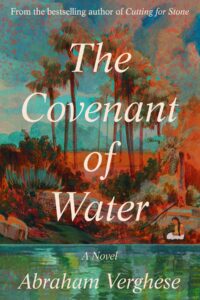 This year, I thought I had very efficiently selected my books early in the year (yes, there were two not just one, but the selection was made…). However, when we met up this summer, my friend and fellow Chef, Karin Wulf, told me I must read Abraham Verghese’s The Covenant of Water; and from then on, it seemed, everyone I talked to also recommended it. I tried and failed to get it from my local library, so instead I read and loved his Cutting for Stone. Not quite as much as the other two books I was planning to write about here — but enough to be a very strong contender. Enough that, when a couple of months later, another friend offered me a spare copy of The Covenant of Water, I jumped at the chance to finally read it. And when I did I knew that I had a new book of the year.
This year, I thought I had very efficiently selected my books early in the year (yes, there were two not just one, but the selection was made…). However, when we met up this summer, my friend and fellow Chef, Karin Wulf, told me I must read Abraham Verghese’s The Covenant of Water; and from then on, it seemed, everyone I talked to also recommended it. I tried and failed to get it from my local library, so instead I read and loved his Cutting for Stone. Not quite as much as the other two books I was planning to write about here — but enough to be a very strong contender. Enough that, when a couple of months later, another friend offered me a spare copy of The Covenant of Water, I jumped at the chance to finally read it. And when I did I knew that I had a new book of the year.Discussion
2 Thoughts on "Chefs’ Selections: Best Books Read and Favorite Cultural Creations During 2023, Part 3"
Well, I’m loving Descartes a Kant; and, as it happens, they have a small European Tour in December. I don’t think I will be getting to see any of these dates, though: 2nd Brussels / 3rd Tournai / 4th Paris / 5th Cologne / 6th Salzburg / 7th Nijmegen / 8th Wetzlar / 9th Saint-Imier / 10th Zürich / 12th Ilirska Bistrica
I found Barbie so disappointing! Perhaps slightly because so much hype had been built up by the time I got around to watching it. I did like all the Lego-movie-style bringing Barbie houses to life type stuff (mostly at the beginning, e.g. opening the fridge door and its contents being painted on the wall). And yes, I agreed with The Speech. But the movie seemed to completely undermine its own message e.g. that the main comment she could find for the old woman in the bus stop was “You’re beautiful” seemed to just reinforce the whole challenge of being judged on looks. And it even seemed to know it was undermining its own message e.g. when Barbie was waffling on about not being pretty any more, and the narrator (Helen Mirren) chimed in with “Note to the filmmakers: Margot Robbie is the wrong person to cast if you want to make this point”. It was fun (albeit over long) but just seemed to get tangled up in its own messages.
